|
Every major funeral service teaches lessons about life and culture. That was especially true of the cremation ceremonies for the former abbot of Wat Kiew Lae Luang in San Pa Tong District of Chiang Mai Province last week. The venerable abbot died in 2557 (2014) and his body has been waiting an auspicious time for cremation ever since. It must be a good time for such ceremonies because there have been two of them last week and several more soon to follow. I am certain that many factors are considered, but in the case of Kiew Lae Luang and Kiew Lae Noi supernatural ones are not included. Those two villages eschew veneration of ghosts and other supernatural beings. There are no spirit houses or shrines and no spirit ceremonies (we understand) in those two villages, which set them apart from most other villages hereabouts. The actual cremation ceremonies began on Monday, February 1 with a community evening service much like other funeral services, but inside the vihara (assembly hall) of the temple compound. This was the final service for the abbot inside the temple with which he had been associated for many of his 82 years. Meanwhile, for several days, a cremation structure befitting the eminence of this abbot was being constructed in the city of Lampoon under the supervision of a monk who specializes in this sort of structure and tradition. During the week before, the components of the structure were transported to the cremation grounds next to the temple and school in Kiew Lae Luang. The final assembly was completed on Sunday, January 31. The structure was made of a wooden framework covered with a skin of woven fiber and spectacularly painted. The structure is a Nok Hasadeeling, a mythological bird five times as large as an elephant with an elephant’s head. This nok (bird, not elephant) is considered the most feared and vicious creature in Thai mythology. (See the picture at the top of this article). It is understood that in former times this mythological bird structure was used for the cremation of Lanna and Lao royalty. The fact that monks of a certain status are given this honor equates them with royalty. However, after the incorporation of Northern Thailand into the nation of Siam, royalty were cremated in Mount Meru (temple shaped) structures. On Tuesday, there was a ceremony and procession to move the body in the casket from the temple to the cremation grounds and to install it in the cremation structure. After appropriate chanting and a eulogy the casket was removed to a vehicle for the trip across the street. It was pulled by a hundred monks and novices as well as hundreds of villagers. Then the casket was hoisted by man-power into position at the top of the temple-like tower on the back of the bird. During this ceremony the head of the bird was animated by fellows inside the structure moving the head, flicking the trunk and flapping the ears. It was supposed to be imposing and a bit intimidating, but the activity of the scores of workers was distracting from that effect. Eventually the casket was in place and that processional event ended. On Wednesday, Thursday and Friday the faithful came to the temple in the evening for chanting services and to listen to sermons. Both preaching and listening to sermons on Buddhist Dharma are meritorious. On this occasion, however, some of the best-known preachers in the region were recruited to teach. On the final evening there were three sermons going antiphonally. Throughout the week people in the village provided food for guests, monks and for themselves. It was a week of eating as well as chanting and preparation for the big event. The actual cremation took place on Saturday, and was divided into two distinct parts. As custom expects, the Palace in Bangkok provided a gift of fire for the cremation. With a police escort befitting royalty, the makings of the fire were brought to the cremation grounds and presented for use with ceremony and short speeches. This was the official cremation ceremony at which a large number of monks (more than 80) chanted, and government officials from far and near participated. In other circumstances actual fire is presented, brought in a lamp to light ceremonial logs which simulate the cremation that may actually take place in a modern gas-fired crematorium nearby. As darkness deepened, about 6:30, the cremation ceremony resumed with the second part getting under way. Again there was a funeral sermon chanted, and the eulogy was repeated. As this was going on a team of workers was climbing over the structure checking and getting the preparations ready for the incineration to follow. The scale of the anticipated fire was emphasized by the presence of four fire trucks parked at strategic locations. When everything was ready and all the workers and monks had left, the fireworks began. First there was a long line of areal bombs and fireworks. That ended with a rocket screaming along a wire toward the Nok Hasadeeling. Fireworks brought the structure into fierce action as flaming wheels whirled strings of sparks cascaded, and the bird made a symbolic journey into mythic time and space through skies filled with stars and forests of flowering trees past waterfalls, all represented by fireworks. In a simulated flash of lightning the pinnacle of the tower on the back of the bird was ignited. The bird’s eyes glowed and then blazed. And soon the entire structure was engulfed in fire. The platform was the main fuel. As that burned, the rest of the towers and more distant parts of the structure caught fire. Everything that collapsed tipped inward adding to the inferno (an engineering feat in my estimation). Nothing was spared. At some time the actual body of the monk had been removed from the casket in its place of honor high overhead, and was now exposed amid the flames in the center of the cremation platform. It would be cremated to bones during the night, which would be gathered for interment back in the temple, perhaps in a chedi to be provided by a temple patron at a later time.
Throughout the week the abbot's robe was suspended overhead. Everyone wondered whether it would catch fire or not. In this case it did not, indicating, some say (and others deny), that the monk will be reincarnated. If it had burned he supposedly would have "gone on". Since the robe did not burn it was expected to be cut into small valuable squares of orange cloth to be treated as venerated objects in homes of the faithful. **NOTE: Several of the pictures accompanying this article are taken by art historian, Dr. Rebecca Hall, who came to Chiang Mai specifically for this cremation to gather information, impressions and photographs as part of her research on Northern Thai Buddhist funerals. She has previously written the following articles on this subject "Onward toward Heaven: Burning the Nok Hatsadiling" and "Materiality and Death: Visual arts and Northern Thai Funerals." Her book in preparation is one we eagerly await.
0 Comments
Leave a Reply. |
AuthorRev. Dr. Kenneth Dobson posts his weekly reflections on this blog. Archives
March 2024
Categories |
| Ken Dobson's Queer Ruminations from Thailand |
|
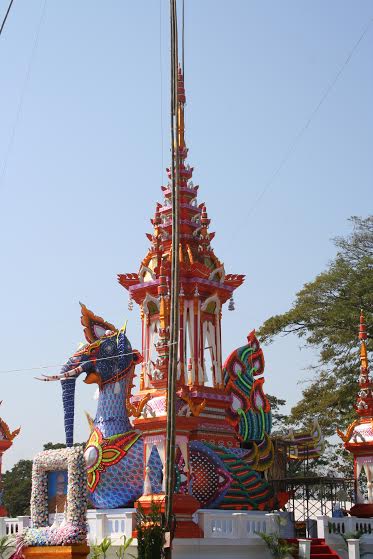
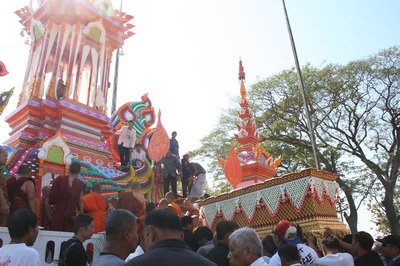
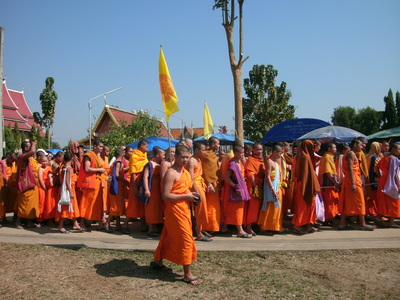
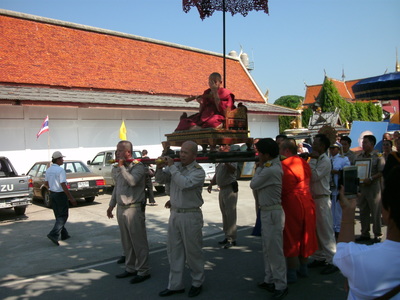
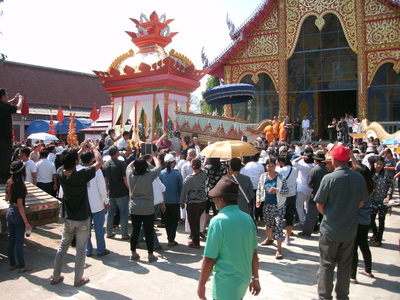
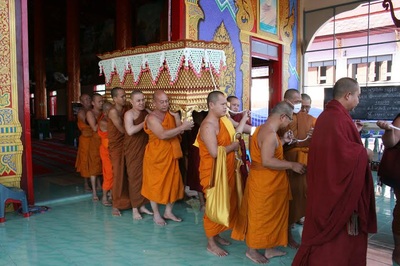
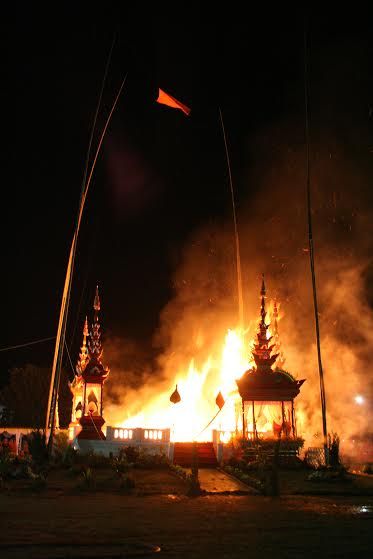
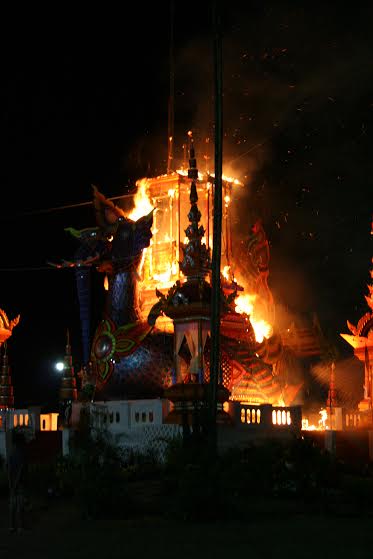
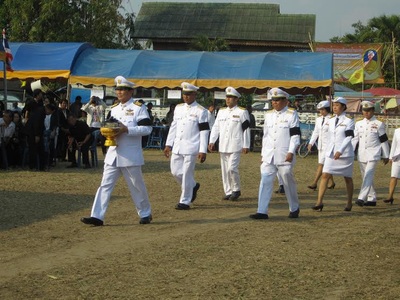
 RSS Feed
RSS Feed
